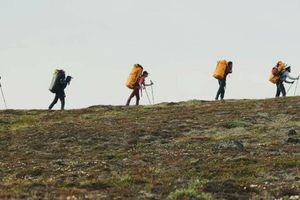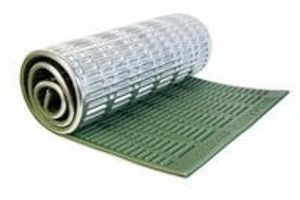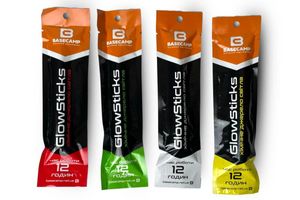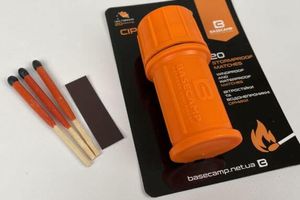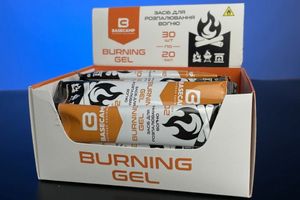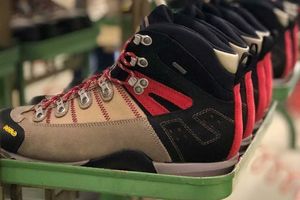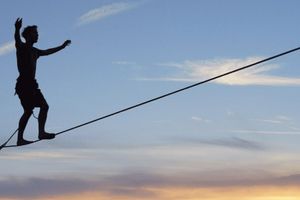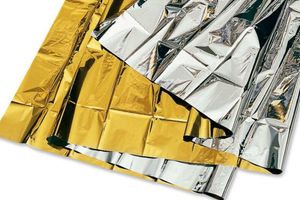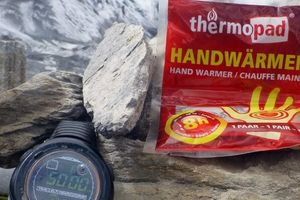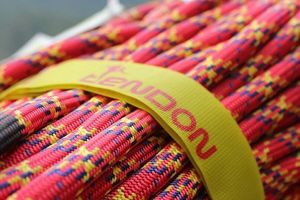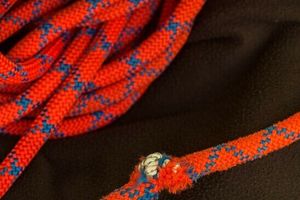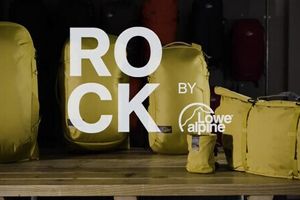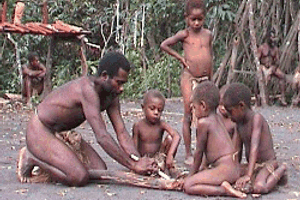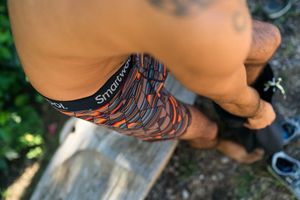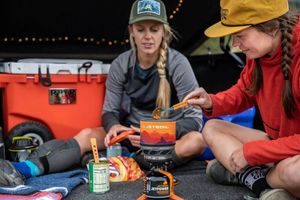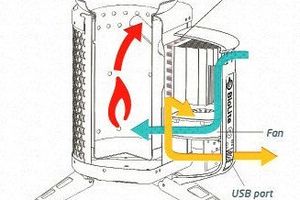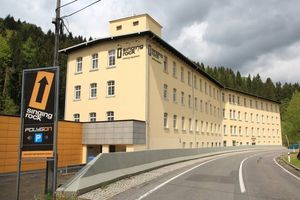Orientation on the terrain with a compass and a map is probably one of the most important skills in the tourist life. But modern light tracking and hiking are practically deprived of such a need – all trails and routes are well marked. In order to get lost or stray from the route, you need to try harder. But this is only in the warm season. When the mountains are covered in snow, or when you are traveling on a new route that you have made yourself, the importance of orientation increases.
But what does a modern tourist travel with? A smartphone with loaded maps or a GPS navigator? In some circumstances, this may be sufficient. But they have a number of disadvantages:
- Dependence on the power source: the battery may run out, and a power bank or replacement batteries are not always in the backpack;
- Insufficiently detailed maps, for example, «telephone» maps are not suitable for orienteering;
- Lack of access to vector maps for detailed route development.
When planning a serious hike, climb, or even freeride, a compass and map can solve terrain orientation issues and even save lives.
Why do you need compasses?
«The compass always points north. Knowing this information, you can quickly orient yourself in the area, not get lost in the forest» - this is exactly the information we were always told in school.
But who among you thought about when you can put this knowledge into practice? In today’s world, a smartphone with Google maps allows you to find your way in a new city, not get lost in the forest, and even go on a simple hiking route in the mountains. Everything is simple – you just need to go where the arrow points.
But sometimes this is not enough.
Modern rogaine and sports tourism competitions involve the passing of KP points and the collection of points. Google will not be enough here, something more universal and detailed is needed. A compass, a map and the skills to use them will help you quickly orientate yourself in the area and make the right route.
Freeride and skitour consist of rolling and traveling through snow-covered mountains far from populated areas on solid snow. The weather is not always clear, you often have to move in clouds or fog. The white fog and white pristine snow all around create a perfectly white space with no vector direction. At the first stages, you can use a smartphone to determine the direction of movement. But it is important to remember that modern devices are afraid of the cold and need to be charged often. And a GPS navigator is usually expensive to buy for a weekend in the mountains. And here you will need a compass and a detailed map of the area. And if you use models of the Expedition series of the Silva brand, you can also determine the level of avalanche danger in a certain area.
In maritime business, basic on-board computers are used if we are talking about large vessels. If it is a small yacht or boat, then marine compasses are used here. They are designed taking into account the peculiarities of maritime business and constant rocking on the waves. Yes, one of the most popular models from Silva 70UNE does not require a perfectly flat horizontal surface to show the direction of north. There is a built-in sensitive bracket that reacts to swaying on the waves. And the moisture-proof case creates a seal inside, thanks to which it does not sink and remains on the surface of the water like a float.
How to use a compass
To understand how to use a compass, you need to understand what it consists of. All Silva compasses have:
- The magnetic arrow is the main element of the compass. Its magnetic end always points north. The material for production is Swedish steel. For ease of use, it is painted in two colors. It is attached to the case with a sapphire bearing, which ensures the smoothest and most gentle rotation.
- The body with the scale is made of durable plastic. So that the values on the scale do not fade over time, all markings are made using the hot stamping technique.
- The liquid inside the case fills the internal volume (that’s why they are called liquid). The basis of the liquid is a patented mixture that ensures the accuracy and stability of the needle, antistatic and moistening of the elements. It does not freeze in the cold, does not turn into a vaporous state in the heat.
- The scale (limb) ensures the accuracy of reading the direction, the minimum step is 1 or 2 degrees depending on the model.
- The movement direction arrow is located on the body or plate. It will «lead» in the chosen direction.
- The built-in clinometer is used to determine the angle of inclination.
The essence of the compass is that its arrow always points to the north. Knowing where north is, you can determine other parts of the world. Thus, focusing on the terrain, determine the direction vector and follow the route.
Silva models are designed to be as user-friendly as possible. By following the classic action algorithm of three main steps, you will quickly determine where north is, where south is, and where you need to move on.
Step number 1
We use a map and a compass. We match them so that the compass points to the north, and the top of the map is directed in the same direction. To do this, turn the compass in your hands until the arrow points to N (north). Using the meridian lines on the map, we compare them with each other. It is necessary to set the map in relation to the compass so that the arrow and the meridian lines are parallel.
Step number 2
We focus on the terrain, find our location. To do this, you can match conventional designations on the map with the environment – the beginning of the forest, the line of the river bed.
Step number 3
We determine the desired goal (CP point, direction of movement) on the map, visually draw a simple straight line. Next, you can use the pointing arrow on the compass. We turn around with the compass in our hands until the pointing arrow points in the right direction, while the magnetic north-south arrow should keep its correct position. Thus, move from point to point, periodically checking the direction with the map. For greater comfort during movement, you can use landmarks in the form of trees, stones or features of the terrain.
Types of Silva compasses
For comfortable use in various conditions, manufacturers have developed several types:
- For outdoor activities. Here you can count the models on the tablet or, as they are also called, the base plate compass. Such options are suitable for competitions, rogaines, hikes, expeditions. The tablet, which is the basis, is equipped with a ruler with a scale and a directional arrow. With such options, it is convenient to read the map in detail. All models of the EXPEDITION, RANGER series can be counted here.
- For sports orientation: there is a manual compass that is attached to the wrist and a «thumb compass» that is fixed on the thumb. These are the most convenient options during long hikes or orienteering. The Silva brand offers the ARC JET, ARC ZOOM series.
- For water activities – they differ in the smoothness of their work, taking into account the waves in the water. Built-in tilt meters «level» the scale during operation. There are models for taming, for high speed, for a kayak, for a motor and those that are built into the body.
Features of Silva compasses
Why are Silva compasses so popular? The answer is their main characteristics:
- Silva is all about liquid compasses. In conventional models, the arrow rests exclusively on the needle and rotates in the air chamber. In order for it to take the correct position, it takes an average of 30 seconds and a maximally flat surface. It is not always convenient in the hiking life. Therefore, to ensure the stability of the hands, Silva uses an antistatic liquid to fill the space around the pointer. Thanks to this, the magnetic arroe enters a state of rest in 3-4 seconds.
- High accuracy is achieved thanks to the use of the best materials: the arrow is made of Swedish high-quality steel, the body is made of acrylic, plastic.
- Ease of use – models with a limb that rotates allow you to orient yourself with the direction vector according to the Silva 1-2-3 scheme as quickly as possible.
- Minimum weight. The lightest of the model range weighs only 33 grams.
- Global compasses. The northern and southern hemispheres interact differently with the magnetic needle of the compass. To make it easier for the user to navigate the terrain, the manufacturer offers a line of global models EXPEDITION, RANGER, which work equally effectively regardless of your location.
Interesting information: there are not only two geographical poles – North and South – but also separate magnetic poles. The points of the geographic and magnetic poles do not coincide with each other. The difference between them is called the magnetic deviation. This indicator will differ in different parts of the planet, sometimes it is indicated on topographic maps. At the same time, it changes over time. That is, a deviation of 2 degrees in a few years can be about 4 degrees. There are no specific dynamics of changes in this indicator, so it is recommended to use the most recent information to determine the exact azimuth. For example, in 2012, the deviation in the Ukrainian Carpathians was 5 degrees in the eastern direction. For comfortable use of Silva compasses, the manufacturer suggests using the included screws. With their help, you can fix the degree of magnetic deviation so that you don’t have to come back to this question every time you need to check the direction.
Returning to the past of compass building...
The Silva company is recognized as the best manufacturer of compasses on the European market.
By developing the first liquid compass of its kind in 1933, they ushered in a new era of orientation. The accuracy of the indicators and the speed of stabilization of the arrow brought direction finding to a qualitatively new level. After all, at that time, during sports competitions in orienteering, everyone used the classic version on a needle, in which the arrow was just in the air. It took time to stabilize.
For orientation in open terrain, manufacturers have developed a mirror compass. It was presented to the community in 1935. It significantly facilitated orientation over long distances. With its appearance, the bearing of a certain point at a long distance became more accurate. These developments are also used in modern models of the Silva Expedition series.
In 1960, the compass was «worn» on the hand. Manufacturers developed a model that was fixed on the wrist. Her strap was designed to be worn over clothing. Mountaineers became the main category of customers.
In 1981, the first marine compass entered the market. It was an electronic device for open water navigation.
It took a lot of time to develop a model that would be able to work equally effectively in both hemispheres. So, in 2016, the global arrow was implemented in the Ranger and Expedition models. Now variants of these series are in demand during serious expeditions, they are chosen by survivalists and orienteers.
Today, Silva is reliability, strength and a precise vector of direction.
In Ukraine, the official supplier of Silva products is the SMG company. Our warehouses have a large selection of compasses, trekking poles and lanterns from the manufacturer. You can familiarize yourself with the full range and buy Silva compasses in Ukraine in stores


